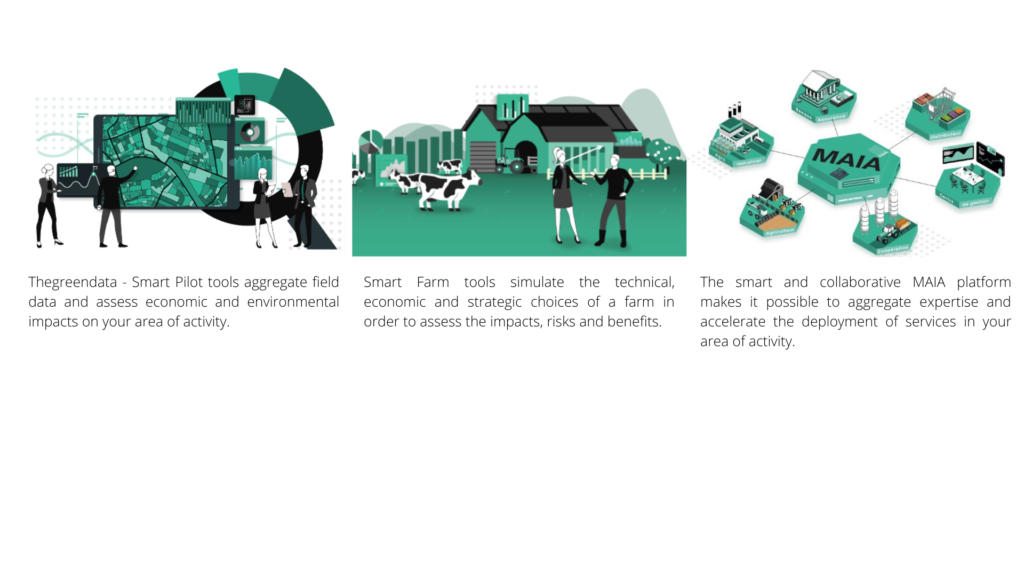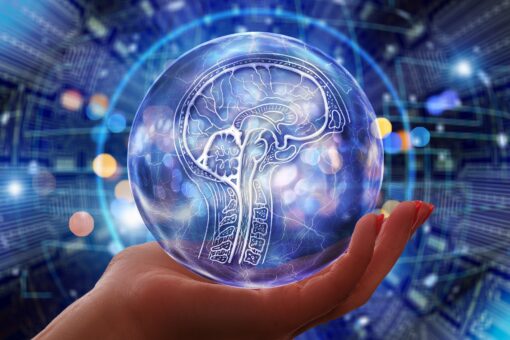The Food Systems Summit 2021 is part of the programme to achieve Sustainable Development Objectives by 2030. The summit will allow to work on new daring actions, to develop new ideas and to co-construct innovations, through 5 action tracks:
Action Track 1: Ensure access to safe and nutritious food for all
Action Track 2: Shift to sustainable consumption patterns
Action Track 3: Boost nature-positive production
Action Track 4: Advance equitable livelihoods
Action Track 5: Build resilience to vulnerabilities, shocks and stress
Key actors from various backgrounds will be present and will work together: political, agricultural, scientific, business, academic, health, etc. as well as farmers, youth representatives, indigenous people, activists and consumer groups.
More specifically, Action Track 5 calls for ensuring the continued functionality of sustainable food systems in areas that are prone to conflict or natural disasters. To this end, the development of artificial intelligence as an innovation in the agri-food system could be a solution. Artificial intelligence as a “collaborative intelligence” between their collaborators and machines, which is still in the form of a prototype in a number of technological discussions, would make it possible not to create artificial supermen, but to increase man’s ability to act and learn”. “The real power of artificial intelligence (AI) is to enable leaders to rethink and transform their organisations through human-machine collaboration, which will reshape businesses and industries,” explains the book “Human + Machine: Reimagining Work in the Age of AI”, co-authored by Paul Daugherty, Accenture’s Chief Technology and Innovation Officer, and Jim Wilson, Chief Information Officer and researcher at Accenture Research. Human + Machine explains how artificial intelligence redefines business processes in this new territory through three types of human-machine interaction: amplification, whereby AI provides humans with new data-based insights, often in real time; interaction, whereby AI uses interfaces such as natural language processing; and embodiment, whereby AI, through sensors, motors and various mechanisms, enables robots to share the workspace with humans and collaborate with them.

Artificial intelligence has an important role to play in the transformation of food systems and in the fight against food and nutritional insecurity. At the event “AI, Food for All. Dialogue and Experiences”, it was stressed that AI in the agricultural sector is developing along three main lines: agricultural robotics, soil and crop monitoring, and predictive analysis. Advances in these areas can, in the context of climate change, population growth and depletion of natural resources, play an important role in soil and water conservation, which are increasingly crucial for achieving sustainable food security. The importance of keeping people and nature at the heart of the reflections was also stressed, and of thinking AI in the service of the latter and of these causes.
To date, several projects are under development, others have already been implemented, in connection with AI in the agricultural system, to develop the resilience of populations and ensure a sustainable food system. Microsoft, in conjunction with Danone, launched in January 2020 the third session of its “AI factory” programme to develop responsible AI in the agri-food sector. The start-up Sowit, for example, has benefited from this training programme. Their mission is to “empower African farmers to better understand their farms, optimize their activities and make strategic decisions during the most critical times”. By mobilising different technologies, imagery and algorithms, they feed their data-science and build models that allow users to better run their operations and optimise their use of inputs. Users thus develop increased resilience in the face of major climatic events that could alter their production.

Thegreendata is also a strategy-up that has benefited from this programme. The decision support tools developed by this start-up are designed to make food chains more collaborative, sustainable and resilient. They aggregate data from the field to provide relevant indicators in order to steer the support strategy for farmers. The solution proposes to the food industry to accelerate the adoption of sustainable agricultural practices in consultation with their producers, through the AI.

CIRAD has also developed an innovative project, since 2019, in connection with AI to model complex agroforestry systems. The Deep2PDE project aims to design tools – based on artificial intelligence – to support mathematical modelling for a better understanding of cocoa-based agroforestry systems in Cameroon.
Artificial intelligence, developed as such in agro-food systems, would therefore make it possible to develop increased resilience in the face of major climatic events, stress, shocks and vulnerabilities: by anticipating them, by anticipating the reaction of crops to them, but also by creating the possibility of a rapid and efficient response.
These different examples illustrate the interest that the deployment of artificial intelligence can have for the development of a resilient agro-food system. However, it is important to keep in mind that this digitisation and artificialisation of the system must not be to the detriment of humans and nature. Its accessibility must therefore be questioned, both in terms of availability and use. Thus, several essential principles underpin the Rome Call for AI Ethics, namely: “transparency (artificial intelligence systems must be explainable), inclusion (the needs of all human beings must be taken into account and they must benefit from the best possible conditions to express themselves and develop) and impartiality (technologies must not create or present a bias that would benefit only a few people).”
References :
Agromedia, Artificial intelligence at the doorstep of the food industry, Conjoncture, 17/07/2019.
CIRAD, Using artificial intelligence to model complex agroforestry systems, 20/05/2019.
FAO, Artificial Intelligence best-practices in agriculture can help bridge the digital divide while tackling food insecurity, Rome, 24/09/2020.
Herrero, M., Thornton, P.K., Mason-D’Croz, D. et al. Innovation can accelerate the transition towards a sustainable food system. Nat Food1, 266–272 (2020).
UN Action Tracks, https://www.un.org/en/food-systems-summit/action-tracks
SOWIT : https://en.sowit.fr
Thegreendata : https://www.thegreendata.com/en/home/

